All the solutions provided in McGraw Hill My Math Grade 4 Answer Key PDF Chapter 14 Lesson 5 Measure Angles will give you a clear idea of the concepts.
McGraw-Hill My Math Grade 4 Answer Key Chapter 14 Lesson 5 Measure Angles
McGraw Hill My Math Grade 4 Chapter 14 Lesson 5 My Homework Answer Key
Practice
Use a protractor to measure each angle.
Question 1.
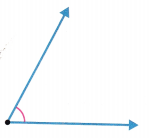
Answer: 60 degrees
Below are the steps to follow to measure an angle using a protractor:
Step 1. Put the protractor above the base line such that the midpoint of protractor is at common endpoint.
Step 2. Adjust the protractor in such a way that base line is parallel to the straight-edge of the protractor.
Step 3. The protractor has two ‘scales’ marked from 0 to 180 degrees on both the ends. Take the reading where base line coincides with the 0 degree.
Step 4. Now from 0 degrees, check the other ray that coincides with the curved edges of the protractor. This reading gives us the measure of the required angle.
Therefore, the given figure measures an angle of 60 degrees, which is an acute angle.
Question 2.

Answer: 155 degrees
Below are the steps to follow to measure an angle using a protractor:
Step 1. Put the protractor above the base line such that the midpoint of protractor is at common endpoint.
Step 2. Adjust the protractor in such a way that base line is parallel to the straight-edge of the protractor.
Step 3. The protractor has two ‘scales’ marked from 0 to 180 degrees on both the ends. Take the reading where base line coincides with the 0 degree.
Step 4. Now from 0 degrees, check the other ray that coincides with the curved edges of the protractor. This reading gives us the measure of the required angle.
Therefore, the given figure measures an angle of 155 degrees, which is an obtuse angle.
Question 3.
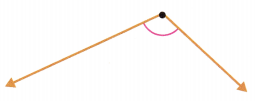
Answer: 75 degrees
Below are the steps to follow to measure an angle using a protractor:
Step 1. Put the protractor above the base line such that the midpoint of protractor is at common endpoint.
Step 2. Adjust the protractor in such a way that base line is parallel to the straight-edge of the protractor.
Step 3. The protractor has two ‘scales’ marked from 0 to 180 degrees on both the ends. Take the reading where base line coincides with the 0 degree.
Step 4. Now from 0 degrees, check the other ray that coincides with the curved edges of the protractor. This reading gives us the measure of the required angle.
Therefore, the given figure measures an angle of 75 degrees, which is an acute angle.
Question 4.

Answer: 25 degrees
Below are the steps to follow to measure an angle using a protractor:
Step 1. Put the protractor above the base line such that the midpoint of protractor is at common endpoint.
Step 2. Adjust the protractor in such a way that base line is parallel to the straight-edge of the protractor.
Step 3. The protractor has two ‘scales’ marked from 0 to 180 degrees on both the ends. Take the reading where base line coincides with the 0 degree.
Step 4. Now from 0 degrees, check the other ray that coincides with the curved edges of the protractor. This reading gives us the measure of the required angle.
Therefore, the given figure measures an angle of 25 degrees, which is an acute angle.
Use a protractor to measure each angle outlined in red.
Question 5.
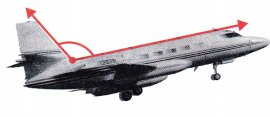
Answer: 120 degrees
Below are the steps to follow to measure an angle using a protractor:
Step 1. Put the protractor above the base line such that the midpoint of protractor is at common endpoint.
Step 2. Adjust the protractor in such a way that base line is parallel to the straight-edge of the protractor.
Step 3. The protractor has two ‘scales’ marked from 0 to 180 degrees on both the ends. Take the reading where base line coincides with the 0 degree.
Step 4. Now from 0 degrees, check the other ray that coincides with the curved edges of the protractor. This reading gives us the measure of the required angle.
Therefore, the given figure measures an angle of 120 degrees, which is an obtuse angle.
Question 6.
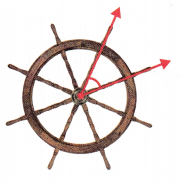
Answer: 40 degrees
Below are the steps to follow to measure an angle using a protractor:
Step 1. Put the protractor above the base line such that the midpoint of protractor is at common endpoint.
Step 2. Adjust the protractor in such a way that base line is parallel to the straight-edge of the protractor.
Step 3. The protractor has two ‘scales’ marked from 0 to 180 degrees on both the ends. Take the reading where base line coincides with the 0 degree.
Step 4. Now from 0 degrees, check the other ray that coincides with the curved edges of the protractor. This reading gives us the measure of the required angle.
Therefore, the given figure measures an angle of 40 degrees, which is an acute angle.
Question 7.
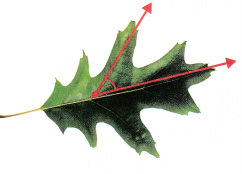
Answer: 45 degrees
Below are the steps to follow to measure an angle using a protractor:
Step 1. Put the protractor above the base line such that the midpoint of protractor is at common endpoint.
Step 2. Adjust the protractor in such a way that base line is parallel to the straight-edge of the protractor.
Step 3. The protractor has two ‘scales’ marked from 0 to 180 degrees on both the ends. Take the reading where base line coincides with the 0 degree.
Step 4. Now from 0 degrees, check the other ray that coincides with the curved edges of the protractor. This reading gives us the measure of the required angle.
Therefore, the given figure measures an angle of 45 degrees, which is an acute angle.
Question 8.
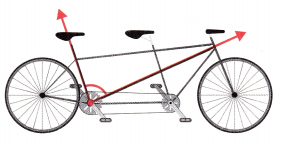
Answer: 85 degrees
Below are the steps to follow to measure an angle using a protractor:
Step 1. Put the protractor above the base line such that the midpoint of protractor is at common endpoint.
Step 2. Adjust the protractor in such a way that base line is parallel to the straight-edge of the protractor.
Step 3. The protractor has two ‘scales’ marked from 0 to 180 degrees on both the ends. Take the reading where base line coincides with the 0 degree.
Step 4. Now from 0 degrees, check the other ray that coincides with the curved edges of the protractor. This reading gives us the measure of the required angle.
Therefore, the given figure measures an angle of 85 degrees, which is an acute angle.
Problem Solving
Question 9.
Heong cut a slice of birthday cake. The slice formed the angle shown. What is the measure of the angle shown?
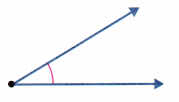
Answer: 30 degrees
Heong cut a slice of birthday cake in 30 degrees for each slice.
Question 10.
Mathematical PRACTICE Use Math Tools Dimitri drew a right angle. Then he drew an angle that was 20° larger. What is the measure of the second angle Dimitri drew?
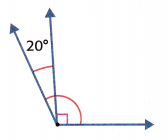
Answer: 110 degrees
The measure of the second angle Dimitri drew is 110 degrees. He drew right angle which is 90 degrees first, then an angle of 20 degrees. Therefore, the required measure of the second angle is 90 + 20 degrees = 110 degrees.
Test Practice
Question 11.
What is the measure of the angle?
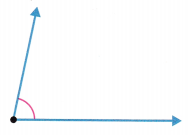
(A) 85°
(B) 80°
(C) 75°
(D) 70°
Answer: B (80°)
Measure the above angle using a protractor.
Below are the steps to follow to measure an angle using a protractor:
Step 1. Put the protractor above the base line such that the midpoint of protractor is at common endpoint.
Step 2. Adjust the protractor in such a way that base line is parallel to the straight-edge of the protractor.
Step 3. The protractor has two ‘scales’ marked from 0 to 180 degrees on both the ends. Take the reading where base line coincides with the 0 degree.
Step 4. Now from 0 degrees, check the other ray that coincides with the curved edges of the protractor. This reading gives us the measure of the required angle.
Therefore, the given figure measures an angle of 80 degrees, which is an acute angle.